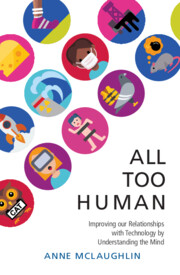Book contents
- All Too Human
- All Too Human
- Copyright page
- Contents
- Figures
- Tables
- Preface
- Acknowledgments
- Introduction
- 1 “Brace for Impact”
- 2 Bad Water
- 3 Hybrid Vigor
- 4 A Mind Divided
- 5 All the Light We Cannot See
- 6 Mistakes
- 7 History Repeating?
- 8 Needles in Haystacks
- 9 Apt Pupils and Alien Invaders
- 10 A Relative to Truth
- 11 Old Principles for New Worlds
- Conclusion
- Notes
- References
- Index
Introduction
Published online by Cambridge University Press: 27 January 2022
- All Too Human
- All Too Human
- Copyright page
- Contents
- Figures
- Tables
- Preface
- Acknowledgments
- Introduction
- 1 “Brace for Impact”
- 2 Bad Water
- 3 Hybrid Vigor
- 4 A Mind Divided
- 5 All the Light We Cannot See
- 6 Mistakes
- 7 History Repeating?
- 8 Needles in Haystacks
- 9 Apt Pupils and Alien Invaders
- 10 A Relative to Truth
- 11 Old Principles for New Worlds
- Conclusion
- Notes
- References
- Index
Summary
In the early 1990s, my car gave me a black eye and introduced me to the world of human factors psychology. People often desire to blame themselves for such accidents rather than the design, but human-centered design has a long and fascinating history. The reader will meet Lillian and Frank Gilbreth, the first of many to scientifically study how humans interact with technology, along with the psychologists who prevented airplane crashes in World War II all the way up to the twenty-first century. These improvements depended on understanding the human mind: human perception, human cognition, biases, and physical limitations. This Introduction is an overview of the many topics important in human factors psychology and a hint at how each will be linked to real-world stories throughout the book.
Keywords
- Type
- Chapter
- Information
- All Too HumanUnderstanding and Improving our Relationships with Technology, pp. 1 - 6Publisher: Cambridge University PressPrint publication year: 2022

